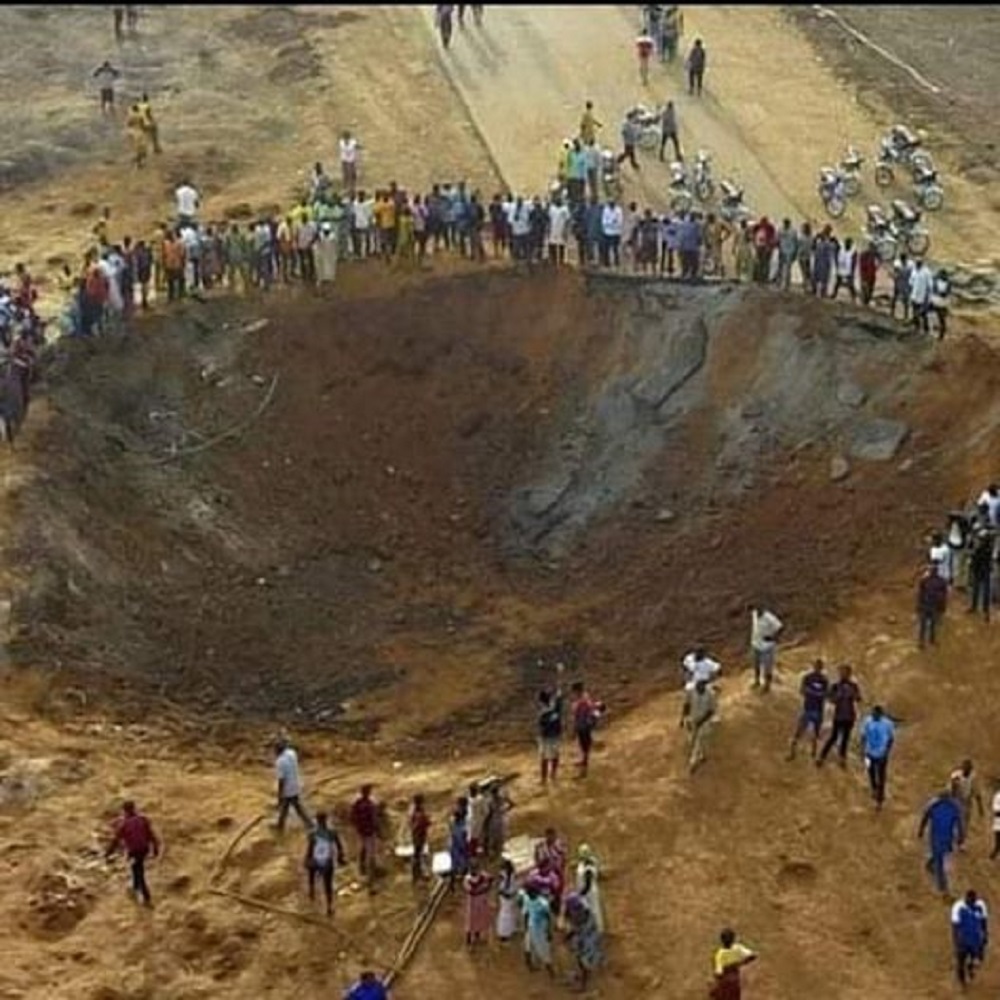Akure explosion was a meteorite – Geophysicist

Contrary to police explanation that the explosion in Akure, Ondo state was a dynamite, a geophysicist, Professor Adekunle Abraham Adepelumi of Obafemi Awolowo University, Ile-Ife has said that the blast was as a result of a meteorite crashing on earth. A meteorite is a piece of rock from outer space.
A shattering explosion had rocked Akure last Saturday blowing off roofs and damaging buildings but police quickly told Nigerians that it was as a result of dynamites which exploded as they were being ferried in a truck to a quarry.
However, there was no evidence of fire at the scene of blast thus putting a lie to the police report. Below is the full report of Professor Adepelumi and his team of experts.
SUMMARY OF THE FINDINGS FROM THE BLAST SITE AT AKURE
My Research group carried out a detailed analysis of the impact site. A circular impact crater with 21m diameter and 7.8m depth was found which suggest a natural phenomenal. Water was found oozing out from the edges of the crater. A preliminary insitu vibration, noise, seismicity, water analysis, radioactivity studies, rock and soil investigation were carried out.
Our findings suggest that the impact of the blasting covers 1km radius of the surroundings of the crater. No evidence of fire or Burning of anything was found within the vicinity. No evidence of radioactivity radiation was found within the crater and immediate vicinity.
The field evidence point to a conclusion that A METEORIC FROM AN ASTEROID BELT THAT TRAVELS AT A GREAT SPEED FROM SPACE IMPACTED THE LOCATION AT AN ANGLE OF 43 degrees created an ejecta at South-Western part. No evidence of buried vehicle, buried ordinance or IED was found.
However, crack opening that vary in thickness from 3mm to 4metres occurs on the wall of most of the buildings but not at the base of the buildings. Also, foreign rocks and strange metallic objects we’re found within the crater. Most of the destruction occurs on top and roof/ceilings of the buildings.
Thank you.
Professor Adekunle Abraham Adepelumi
Professor of Geophysics
Obafemi Awolowo University, Ile-Ife.
Phone: 08128181062
Email: aadepelu@oauife.edu.ng








